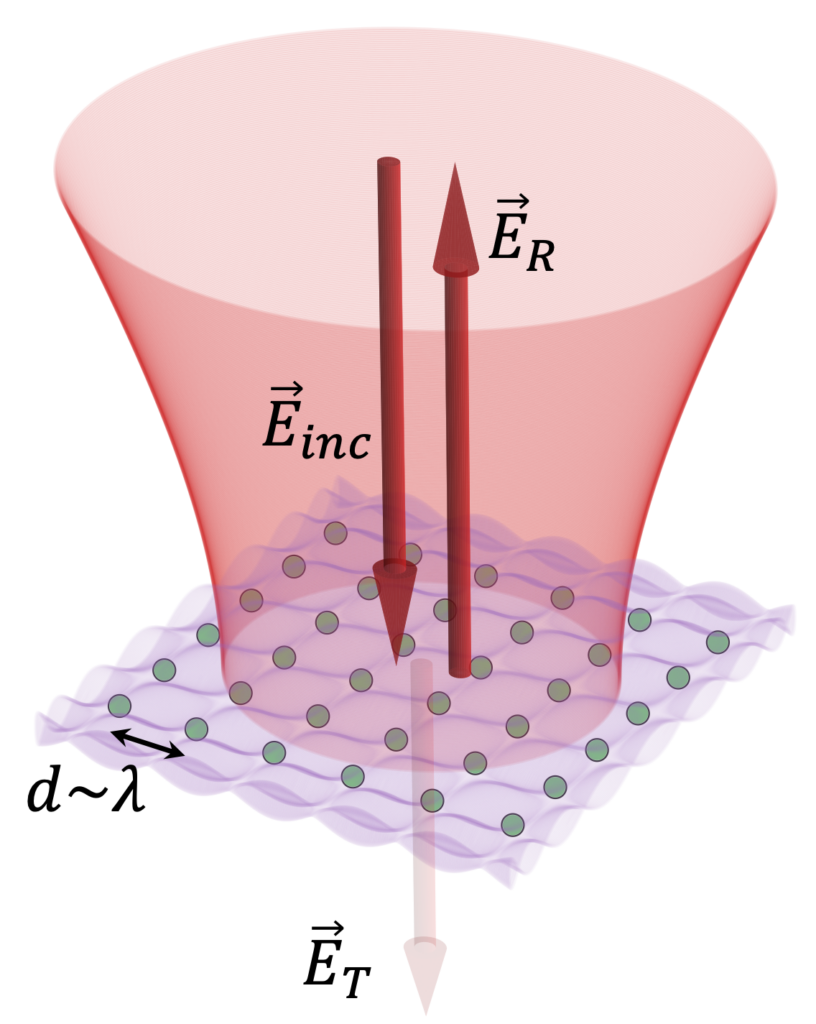Research
Our research exploits the quantum properties of atoms to advance the understanding of quantum systems and impact applications of quantum information science.
In our lab, we trap and manipulate single Ytterbium atoms with optical tweezers (tightly focused laser beams). The versatility of the optical tweezer apparatus allows us to manipulate atoms into geometries of interest for quantum simulation (i.e., different lattice types), bring atoms close together to generate cooperative effects between atoms, and manipulate arrays of atoms near nanophotonic structures and optical cavities for enhancing atom-photon interactions.
Atoms and Nanophotonics
Cooperative Atom Arrays

Collective interactions between atoms in an ordered array dramatically alter the optical response of the system. This effect, first introduced by Dicke in 1954, remains an open research problem in quantum optics that can now be explored in ordered atomic systems using optical tweezers. An atom in an ordered array will experience an external driving field and the scattered field of nearby atoms at the same optical transition wavelength. Depending on the inter-atomic spacing, the scattered fields from the atoms will interfere, resulting in a cooperative response of the system, which can be constructive (super-radiant) or destructive (sub-radiant). For spacing on the order of the wavelength in a 2D array, this response results in near-perfect reflection of the incident excitation light. In an ordered atomic array, the proximity of neighboring atoms fundamentally alters the optical response of the system. This case creates an all-atomic mirror, while other geometries generate systems with other functionalities like waveguides. The strong atom-photon interactions, which are now realizable in free space, open up a new avenue of atom photonics where traditional dielectric elements are replaced by atomic systems.

 MENU
MENU